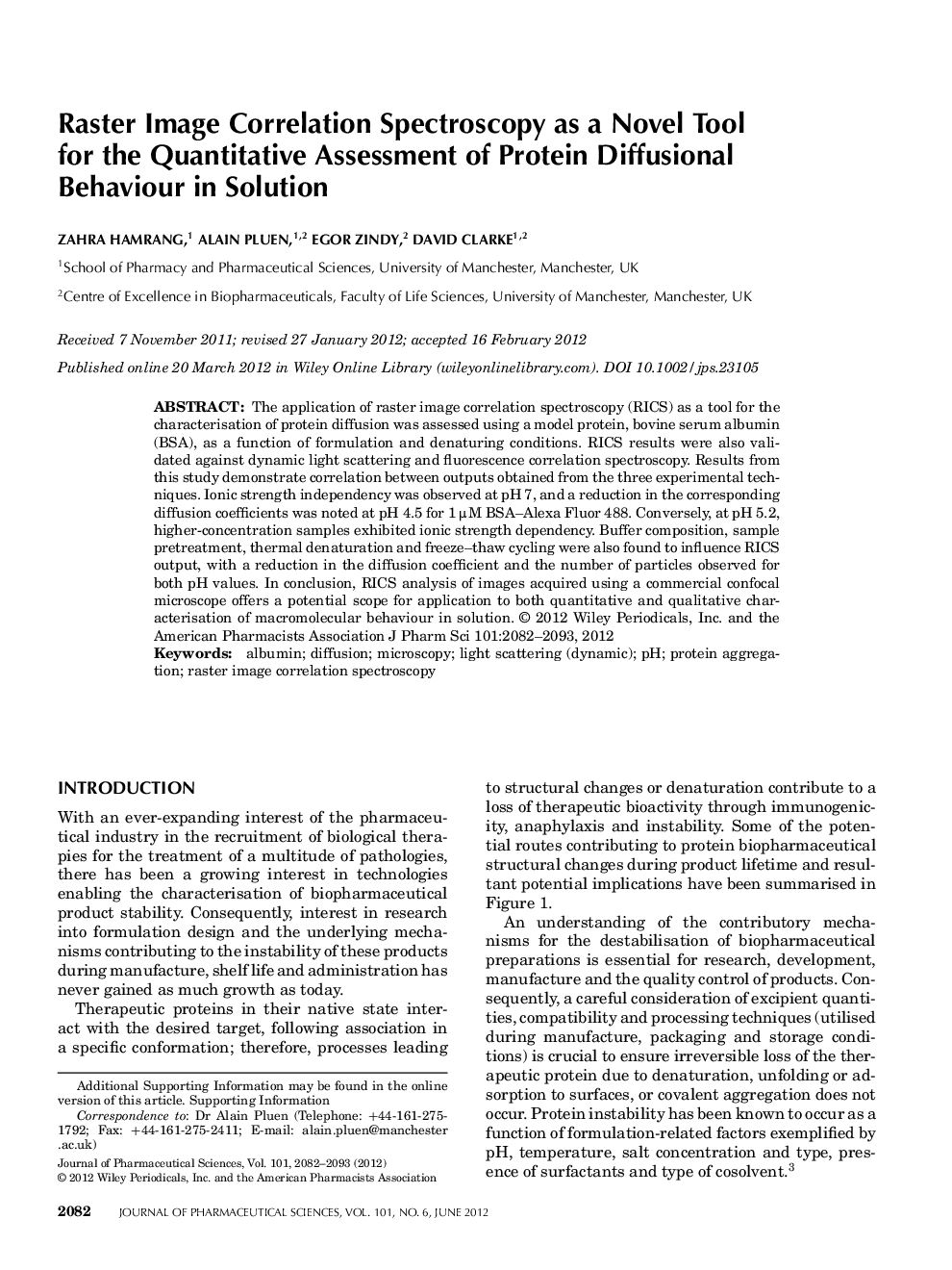| Article ID | Journal | Published Year | Pages | File Type |
|---|---|---|---|---|
| 2485738 | Journal of Pharmaceutical Sciences | 2012 | 12 Pages |
Abstract
The application of raster image correlation spectroscopy (RICS) as a tool for the characterisation of protein diffusion was assessed using a model protein, bovine serum albumin (BSA), as a function of formulation and denaturing conditions. RICS results were also validated against dynamic light scattering and fluorescence correlation spectroscopy. Results from this study demonstrate correlation between outputs obtained from the three experimental techniques. Ionic strength independency was observed at pH 7, and a reduction in the corresponding diffusion coefficients was noted at pH 4.5 for 1 µM BSA-Alexa Fluor 488. Conversely, at pH 5.2, higher-concentration samples exhibited ionic strength dependency. Buffer composition, sample pretreatment, thermal denaturation and freeze-thaw cycling were also found to influence RICS output, with a reduction in the diffusion coefficient and the number of particles observed for both pH values. In conclusion, RICS analysis of images acquired using a commercial confocal microscope offers a potential scope for application to both quantitative and qualitative characterisation of macromolecular behaviour in solution. © 2012 Wiley Periodicals, Inc. and the American Pharmacists Association J Pharm Sci 101:2082-2093, 2012
Keywords
Related Topics
Health Sciences
Pharmacology, Toxicology and Pharmaceutical Science
Drug Discovery
Authors
Zahra Hamrang, Alain Pluen, Egor Zindy, David Clarke,
